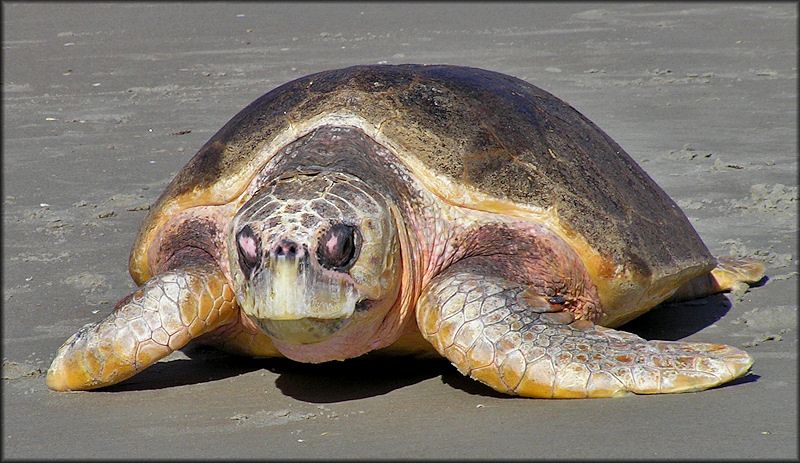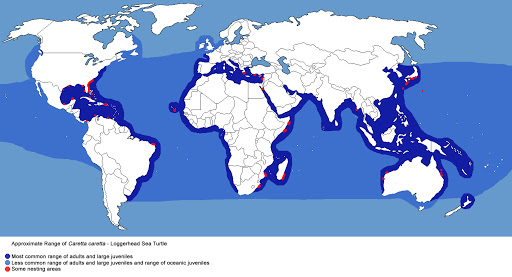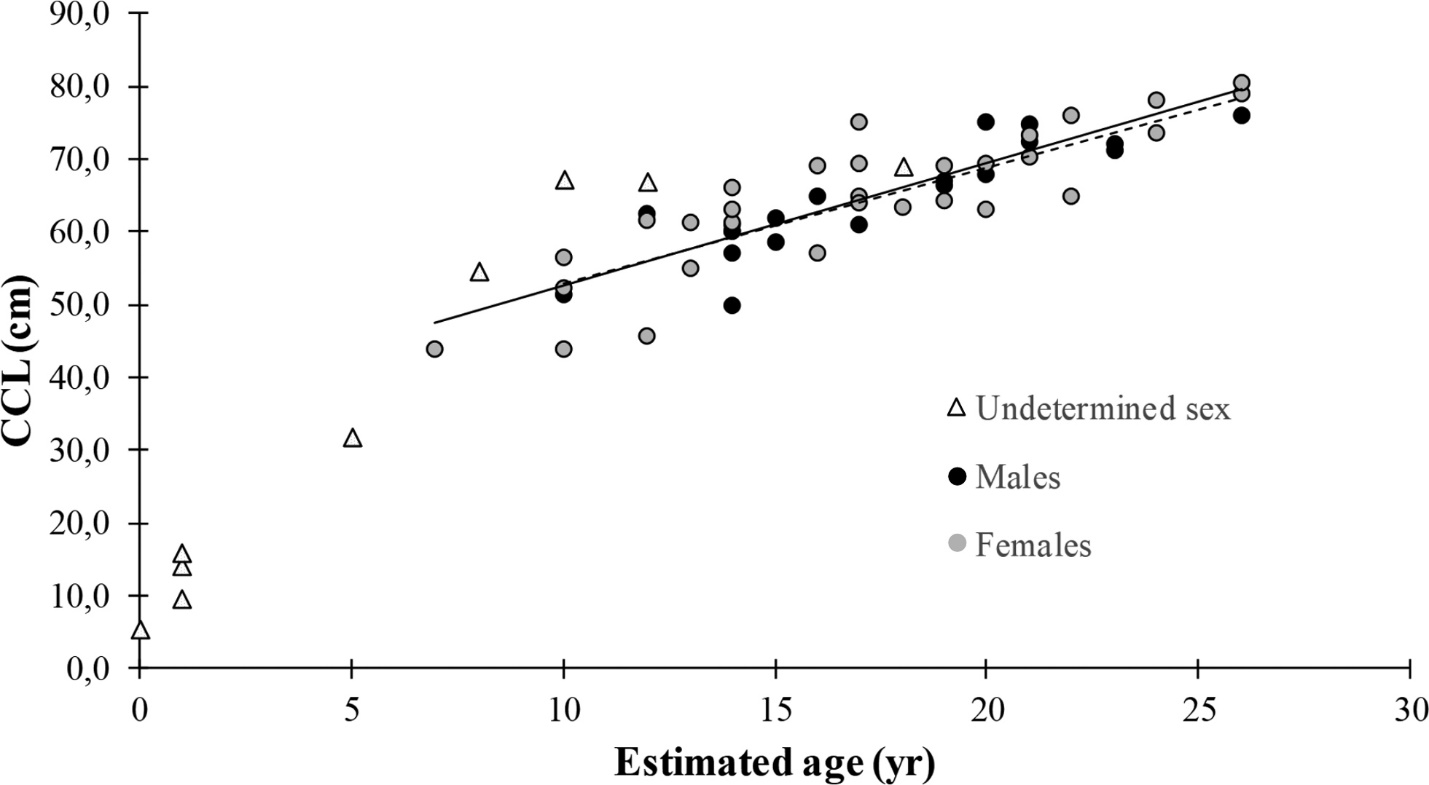Introduction
The (Caretta caretta) loggerhead sea turtle is the species of oceanic turtle which is spread all over the world and belongs to the Cheloniidae family. Adults measure an average of 90 centimeters in the carapace length (Blasi & Mattei, 2017). Its normal weight is 135 kilograms although there are bigger species whose weight is more than 450 kilograms. Its skin color ranges from yellow to brown and the shell is naturally reddish-brown (Blasi & Mattei, 2017).
When they are young, there are no external differences in sex until they become mature when adult males develop thicker lower shells and thicker tails than their female counterparts. The turtles are mostly found in the Indian, Pacific, and Atlantic oceans and the Mediterranean Sea (Blasi & Mattei, 2017). Most of their time is spent in estuarine habitats and saltwater, although the females come ashore to lay eggs.

The Caretta Caretta have a low rate of reproduction, where females lay approximately four clutches of eggs after which they become inactive without reproducing for two to three continuous years (Blasi & Mattei, 2017). The turtles have a lifespan of 47 years and they reach maturity when they are between 17 and 33 years (Blasi & Mattei, 2017).
They are omnivorous animals that majorly feed on the invertebrates that live on the bottom of oceans. They have powerful jaws which help them to catch and dismantle their prey without much struggle. They have dorsals that are in the shape of the heart and its width is 76 to 86% of their actual body length (Blasi & Mattei, 2017). The carapacial scutes are hard and tough but thin with scales. The hatchlings are dark-brown with pale-brown dorsal and the lower shells are paler (Blasi & Mattei, 2017).The young loggerheads are prone to several sea predators and the eggs are susceptible to the terrestrial organisms that feed on them.

When they become adults, their formidable body sizes protect them from being preyed on by large sea animals such as sharks. The International Union for Nature Conservation regards the animal species as endangered because of the numerous potential threats (Blasi & Mattei, 2017). Most loggerheads die due to unintended fishing by large trawlers.
Caretta is broadly distributed in the coastal subtropical and tropical waters which has temperature ranges of between 16 and 20°C (Bolton & Witherington, 2019). This type of species prefers wandering between the boundaries of the warm currents and the temperate waters. Marine scientists suspect that the creatures take long migrations in the warm currents, especially in the California Currents, North Equatorial, Gulfstream, and Kuroshio Currents which have a temperature ranging between 12–20°C (Bolton & Witherington, 2019). Sometimes they find themselves wandering in the waters that are above 10°C. When they reach territories with cold waters in their course of migration, they remain helplessly on the shores (Bolton & Witherington, 2019). When they remain astray for a long time, they become vulnerable to human beings who sometimes take them out of the waters to the conditions that are not favorable for their survival.
Primarily, this turtle inhabits the continental shores of shallow waters which are commonly found in warm areas, although they also live in highlands such as Zakinthos in Greece, Masirah in Oman, and the Archipelago in Japan. It is the only species of the sea turtle family that inhabits in temperatures above 20°C (Family, 2018).
Immediately after the end of the breeding season, the females leave to far grounds for feeding. The juveniles and hatchlings are usually associated with the convergences of the oceanic currents, eddies, and downwellings where the epipelagic floating animals are usually found (Bolton & Witherington, 2019). There is a period of one year when the young turtles remain in these places feeding on organisms that are connected to the sargassum mats. There are numerous main nesting areas for the species and most of them are found in the northern latitudes. Generally, the loggerheads do not inhabit Arriba zones but they nest on big beaches.
The main areas for nesting are found in the southeast of the United States of America, mainly in South Carolina and Florida with an average annual production of 4000 nests. The sea Caretta is the most common type of turtle in the Mediterranean Sea and is frequently captured either incidentally or directly (Family, 2018). The size of the eggs varies depending on the size of the turtle. Small turtles lay small eggs and the bigger ones lay big eggs. The diameter of the eggs ranges between 34.7 to 55.2 millimeters and their weight ranges between 26.2 and 46.8 grams (Family, 2018). Figure 3: Loggerhead Turtle Growth Pattern

The Threats Encountered by the Loggerhead Turtle Include Terrestrial
This type of turtle is vulnerable to several threats which are a danger to their survival. Their populations are facing a major threat due to the reduced populations of hatchlings because they are fed on by the native and natural fauna (Johnson & Bayley, 2016). The loss of hatchlings and eggs has been identified as the most major threat in the United States and Australia.
Lower Water Table and Changed Light Horizons
There is an increasing evidence of decreased hatchlings due to the increased amount of water. This problem is prominent in Queensland Australia, and it has been experienced in some parts of the United States. Light horizons in the habitats of the sea turtles occur when there are operation phases and construction on the offshores. The activities disrupt the hatchling, foraging habits, and nestling of the turtles (Dutton, Squires, & Mahfuzuddin, 2017). Studies have shown that light pollution on land affects the nestling of the female turtles.
Armoring of Beaches and Fisheries by Catch
Armoring of beaches to prevent the dunes and soil erosion also affect the loggerhead turtle. The land-based construction on the areas where there are marine turtles directly destroys and changes the coastal vegetation that the creatures rely on. The beaches are made unsuitable for the nesting of eggs hence making them lose the beaches for nesting. The interaction between the loggerhead turtles and the fisheries mostly occur when they are either young or at the juvenile stage. The fisheries without any intentions capture the young turtles through entanglement in fishing nets (Dutton et al., 2017). This affects both the habitat and the life of these young creatures, which sometimes lead to their death.
Ship strikes and Dredging
Marine vessels such as commercial ships, recreational crafts, and fishing boats cause serious disruptions and injuries to the sea turtles. This normally happens where the coastal foraging habitats are shallow and if there are a lot of commercial and recreational activities. (Frontmatter, 2017). During marine development and construction, the underwater demolitions, and removal of structures in the areas occupied by marine turtles can cause major impacts and disturbances which affect the lives of the loggerhead turtle.
Marine Debris
The non-degradable debris, such as garbage and plastics that float in the water, leads to the restricted movement of the loggerhead turtles, which can lead to ingestion, starvation, and drowning. The other issues affecting the marine turtle include climate change, legal and illegal harvesting of the turtles, and diseases that are caused by poor quality of water. There are many more ways in which the habitats of the loggerhead turtles are affected; however, the above-heighted ways are the main ones (Ayyam, Palanivel, & Chandrakasan, 2019). It is, therefore, important to employ recovery strategies so that these organisms do not face extinction.
Adaptation Management Strategies
The adaptive management measures are supposed to involve all the stakeholders so that all of them can work together for a common goal. The recovery plans are prepared by the National Maritime and Fisheries Service together with the Fish and Wildlife Service. Other parties include the state agencies and subcontractors (Allen & Garmestani, 2015). The recovery plans can be modified if there are new findings of the species and if there are changes in the recovery tasks.
The Recovery Procedure
Objective: To protect the species from extinction.
The Recovery Standards: To protect the species the following criteria should be strictly followed: 1). To enforce agreements of fishing in the international waters where most of the loggerhead turtles inhabit. 2). The existing forage areas for the species must be upheld as healthy environments. 3). Design a management plan to maintain or increase the population of this species in their habitats.
4). Formulate a formal agreement and cooperation with the regional programs in charge of the sea turtles. 5). Enact international agreements to protect the stocks shared by different countries (Jefferies & Moore, 2016) Conserving biodiversity is one of the pertinent problems that deserve greater attention of organizations, governments, and individuals. There is a complex link between the human survival and that of the several species that are within our environment. Despite investing money in the conservation of the loggerhead turtle, the process has been erratic and slow. Studies on this species would assist in navigating the problems so that the animals do not face extinction (D. Witherington & B. Witherington, 2016). Most of the researchers in the field of environmental conservation have been focusing on the conservation biology, but it is not time to focus on the threats humanity poses to creatures such as the loggerhead turtle (Cunningham, 2018).
Adaptive management has not been broadly applied in conservation efforts to protect the loggerhead turtle (İşler, 2020). In order to address the objectives of this issue, this study will mainly rely on the publications from several fields and the research analysis. It is important to preserve the populations of turtles to recover them from becoming extinct by ensuring that the nesting females, their hatchlings, and nests are safe.
The following actions therefore have to be taken to protect their populations: 1). Eradicate the direct take of the turtle’s eggs, hatchlings, and adults. Studies have identified the direct take of the turtles as the primary cause of their reductions in the Pacific areas. 2). Upsurge the enforcement of the laws that protect this species of turtles by ensuring that courts punish those who violate them. The prosecutorial and judicial enforcements should receive adequate support and resource to effect this obligation (Johnson & Bayley, 2016) 3). Make sure that the constructional equipment causes minimum disruptions to the hatching and nesting activities of the turtles. Eventually, the construction equipment should be prohibited from operating on beaches.
4). The lighting of the construction sites at night should be forbidden during the hatching and nesting periods because they affect the exercise. The structures that block turtles from accessing the beach should be demolished. 5). Reducing nest predation by domestic and feral animals (Johnson & Bayley, 2016) 6). Feral animals such as mongoose and dogs pose a threat to the hatchlings and nests of turtles. It is therefore important that these predators are prevented from accessing the nesting areas.
Other animals such as pigs can also destroy the hatchlings and nests. The domestic animals should be restricted from accessing the nesting and hatchling regions (Cunningham, 2018). 7). Protecting important nesting beaches. The nesting activities should be regularly monitored to identify the beaches that are mostly used for nesting so that they can be protected. Standardized surveys should be used in identifying the seasons for nesting. Information surveys should be conducted with the local communities to receive information about the historical and current beaches for nesting.
The surveys need to be done consistently by the personnel who are experienced both in turtles and in surveys. Since female turtles are faithful to their nesting beaches, the censuring method should be used to assess the turtle’s maternal populations. This is the most effective method that will give an accurate picture of what is happening on the ground (Cunningham, 2018) 8). Define the stock boundaries for Pacific sea turtles. Turtles have a unique genetic signature for every main nesting assemblage, and because the assemblage of nests provides an easy way of monitoring their populations, the genetic analysis technique will be the most appropriate in determining their stock boundaries.
The method also makes it easier for the managers of the turtle protection program to assess the type of stocks which are impacted mostly by the activities that displace them from their nesting areas (Cunningham, 2018). 9). The marine environment should be highly protected and conserved so that no form of pollution will affect the habitat of the turtles. This kind of protection can only be achieved through the enactment of legislation that projects the creatures from environmentally harmful effects. The protection should range from the protection of the nesting, the hatchlings, and the environment of the mature turtles (Walter, 2015).
References
Allen, C. R., & Garmestani, A. S. (Eds.). (2015). Adaptive management of social-ecological systems. New-York, NY: Springer.
Ayyam, V., Palanivel, S., & Chandrakasan, S. (2019). Coastal ecosystems of the tropics – Adaptive management. New York, NY: Springer.
Blasi, M. F., & Mattei, D. (2017). Seasonal encounter rate, life stages and main threats to the loggerhead sea turtle (Caretta caretta) in the aeolian archipelago (southern Thyrrenian Sea). Journal of Aquatic Conservation, 27(3), 617–630. Web.
Bolton, A. E., & Witherington, B. E. (Eds.). (2019). Loggerhead sea turtles. Washington D.C.: Smithsonian Books.
Dutton, P. H., Squires D., & Mahfuzuddin, A. (2017). Conservation of Pacific Sea Turtles, Honolulu, Hawaii: University of Hawaii Press.
Chapman, B., & Hicks, A. (2020). Ocean animals. Melbourne, Australia: CSIRO Publishing.
Cunningham, A. (2018). Adaptive management strategies on the Chesapeake Bay regarding TMDLs. [PDF document]. Web.
Family, C. (2018). The sea turtles: Handbook of turtles, 341–410.
İşler, C. T. (2020). Deniz Kaplumbağaları (Caretta caretta ve Chelenoidas mydas) Gözlerinin Ultrasonografik İncelenmesi. Hatay, Turkey: Kafkas Universitesi Veteriner Fakultesi Dergisi.
Jefferies, C. S., & Moore, J. N. (2016). Marine mammal conservation and the Law of the Sea. New York, NY: Oxford University Press.
Johnson, M., & Bayley, A. (2016). Coastal change, ocean conservation and resilient communities. New York, NY: Springer.
Lawrence, A. (2015). Sea turtles: Amazing pictures and animal facts everyone should know. Scotts Valley, California: Createspace Independent Publishing Platform.
Walter, S. (2015). Grandpa Julius and the green sea turtles. Singapore: Partridge Publishing Singapore.
Witherington, D., & Witherington, B. (2016). Sea turtle of the Pacific. New York, NY: Nimbus Publishing